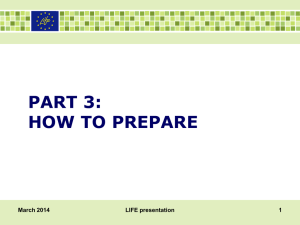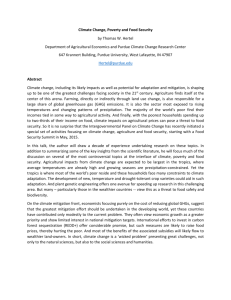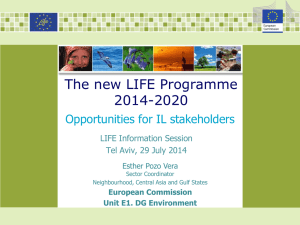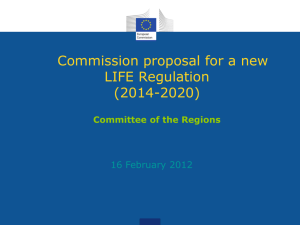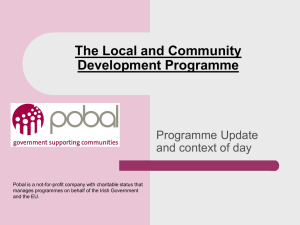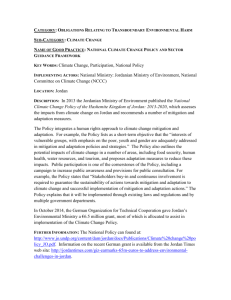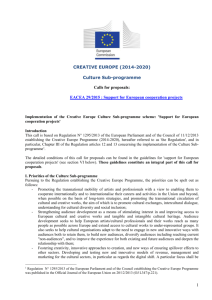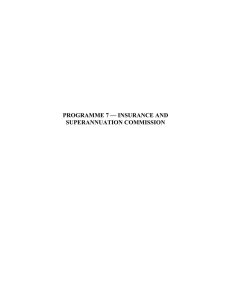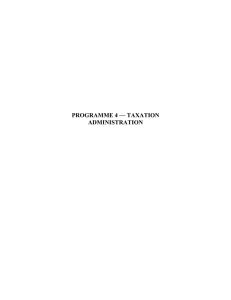LIFE Programme 2014-2012 - Department of Environment and Local
advertisement
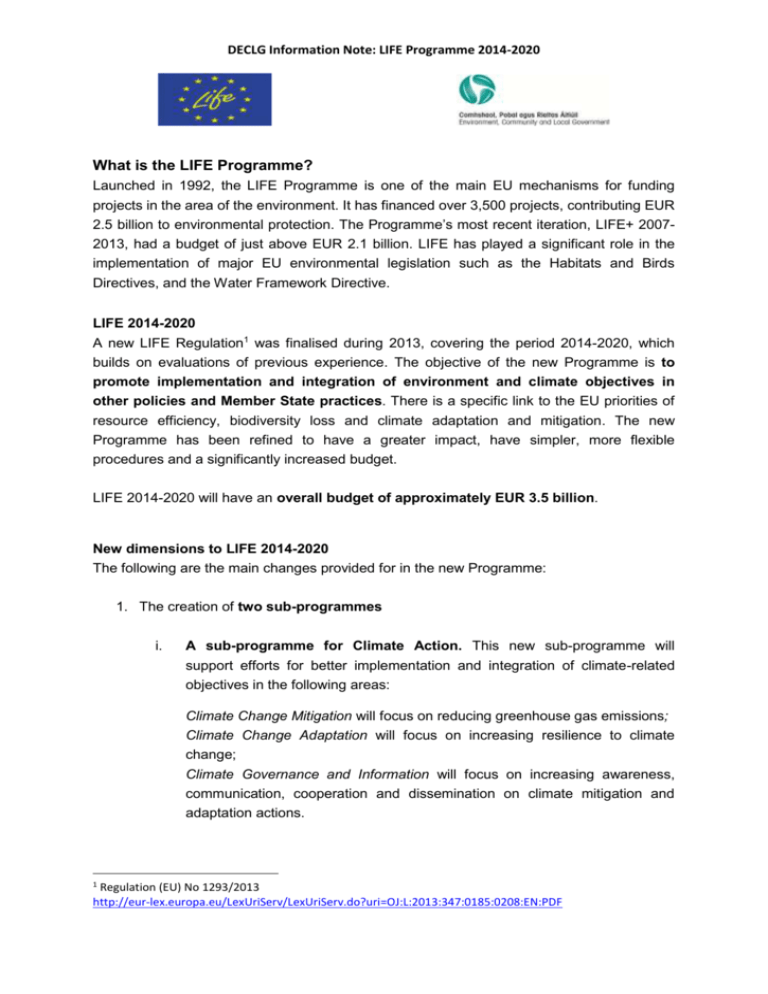
DECLG Information Note: LIFE Programme 2014-2020 What is the LIFE Programme? Launched in 1992, the LIFE Programme is one of the main EU mechanisms for funding projects in the area of the environment. It has financed over 3,500 projects, contributing EUR 2.5 billion to environmental protection. The Programme’s most recent iteration, LIFE+ 20072013, had a budget of just above EUR 2.1 billion. LIFE has played a significant role in the implementation of major EU environmental legislation such as the Habitats and Birds Directives, and the Water Framework Directive. LIFE 2014-2020 A new LIFE Regulation1 was finalised during 2013, covering the period 2014-2020, which builds on evaluations of previous experience. The objective of the new Programme is to promote implementation and integration of environment and climate objectives in other policies and Member State practices. There is a specific link to the EU priorities of resource efficiency, biodiversity loss and climate adaptation and mitigation. The new Programme has been refined to have a greater impact, have simpler, more flexible procedures and a significantly increased budget. LIFE 2014-2020 will have an overall budget of approximately EUR 3.5 billion. New dimensions to LIFE 2014-2020 The following are the main changes provided for in the new Programme: 1. The creation of two sub-programmes i. A sub-programme for Climate Action. This new sub-programme will support efforts for better implementation and integration of climate-related objectives in the following areas: Climate Change Mitigation will focus on reducing greenhouse gas emissions; Climate Change Adaptation will focus on increasing resilience to climate change; Climate Governance and Information will focus on increasing awareness, communication, cooperation and dissemination on climate mitigation and adaptation actions. 1 Regulation (EU) No 1293/2013 http://eur-lex.europa.eu/LexUriServ/LexUriServ.do?uri=OJ:L:2013:347:0185:0208:EN:PDF DECLG Information Note: LIFE Programme 2014-2020 The sub-programme for Climate Action will have a budget of approximately EUR 864 million over the duration of the Programme (or 25% of the overall LIFE budget 2014-2020).2 ii. A sub-programme for Environment will support efforts for better implementation and integration of environmental objectives in the following areas: Environment and Resource Efficiency will focus on implementation of environment policy and exclude market replication-oriented innovation; Nature and Biodiversity will develop best practices for wider biodiversity challenges, while keeping its focus on Natura 2000; Environmental Governance and Information will promote knowledge sharing, dissemination of best practices, and better compliance, in addition to awareness raising campaigns. The sub-programme for Environment will have a budget of approximately EUR 2.6 billion over the duration of the Programme (or 75% of the overall LIFE budget 2014-2020). While the ‘Common Provisions 2014’ and ‘Project Evaluation Guide’ have yet to be finalised, projects under the two sub-programmes will be of a similar type to LIFE+, i.e., best practice, innovation and demonstration projects, as well as dissemination/information, and governance projects. 2. The creation of a new project–type, the Integrated Project [IP], aimed at implementing on a large territorial scale environmental or climate strategies or action plans. These will focus primarily on nature, water, waste, air, and climate change mitigation and adaptation sectors. IPs must promote, when possible, the coordination and mobilisation of other EU Funds and/or national and private funds. The Integrated Project shall: 2 At least 81 % of the budget for the LIFE Programme will be allocated to projects supported by way of action grants or, where appropriate, financial instruments. The remainder will be applied to operational grants (NGOs; IMPEL) and Programme overheads, i.e. conferences, service contracts, technical assistance for Programme monitoring. DECLG Information Note: LIFE Programme 2014-2020 Implement a plan, a programme or strategy required by EU environmental or climaterelated legislation (e.g., River Basin Management Plan), or pursuant to other acts (e.g., Communication on Climate Change Adaptation), or developed by MS authorities (e.g., sustainable urban plan); and Have a larger territorial scale (e.g., national, regional, multiregional, large metropolitan area); Be primarily in the areas of nature, including, inter alia, Natura 2000 network management, water, waste, air and climate change mitigation and adaptation. It is envisaged that Integrated Project applicants will, in most cases, be the authority responsible for the sector concerned. The Commission will still be directly responsible for their selection, attribution and monitoring and will therefore ensure a sufficient level of control. In order to ensure geographical balance, an indicative allocation of at least three integrated projects to each Member State, over the lifetime of the Programme 2014-2020, is being applied, provided the projects reach a minimum quality threshold. A ceiling of 30% of the projects budget will apply to IPs – a maximum of EUR855 million over the 7 years 2014-2020. Proposed co-ordinated, national approach to LIFE 2014-2020 Successful participation in the LIFE 2014-2020 Programme can bring benefits for Ireland in terms of increased compliance with environmental legislation, additional research to support policy development and increased investment in Ireland’s environment. In its role as National Contact Point, in advance for the next call for proposals (anticipated May/June 2014), DECLG intends to: Build a broader level of awareness among potential LIFE Project participants (Government Departments, LAs, NGOs, SMEs) through information sessions to highlight changes to the LIFE programme, and in particular the new role of the Integrated Project and the Climate Sub-Programme, and to mobilise early applications and momentum. Use social media to promote and encourage participation in the LIFE Programme. DECLG Information Note: LIFE Programme 2014-2020 Identify at an early stage potential projects. The attached ‘concept template’ is designed to help compile a basic project structure, for completion by potential applicants before final submission to the European Commission. Assist potential applicants in identifying co-financing sources such as National Waste Prevention Programme, NGO operating grants, as well as potential co-funding streams from other Departments (DAHG, DAFM and CAP, INTERREG, Irish Water, North-South funds, SEAI etc.), which can be used to either count as co-funding or be aligned with broader integrated projects, and also explore non-traditional funding (philanthropic, international institutions) and possible private sector contributions. Facilitate more structured on-going communication and engagement with other key stakeholders via a National Steering Committee, as well as and potential applicants, and policy-makers at EU level (DG ENV and DG CLIMA) to highlight potential outputs and build support for our proposals.
